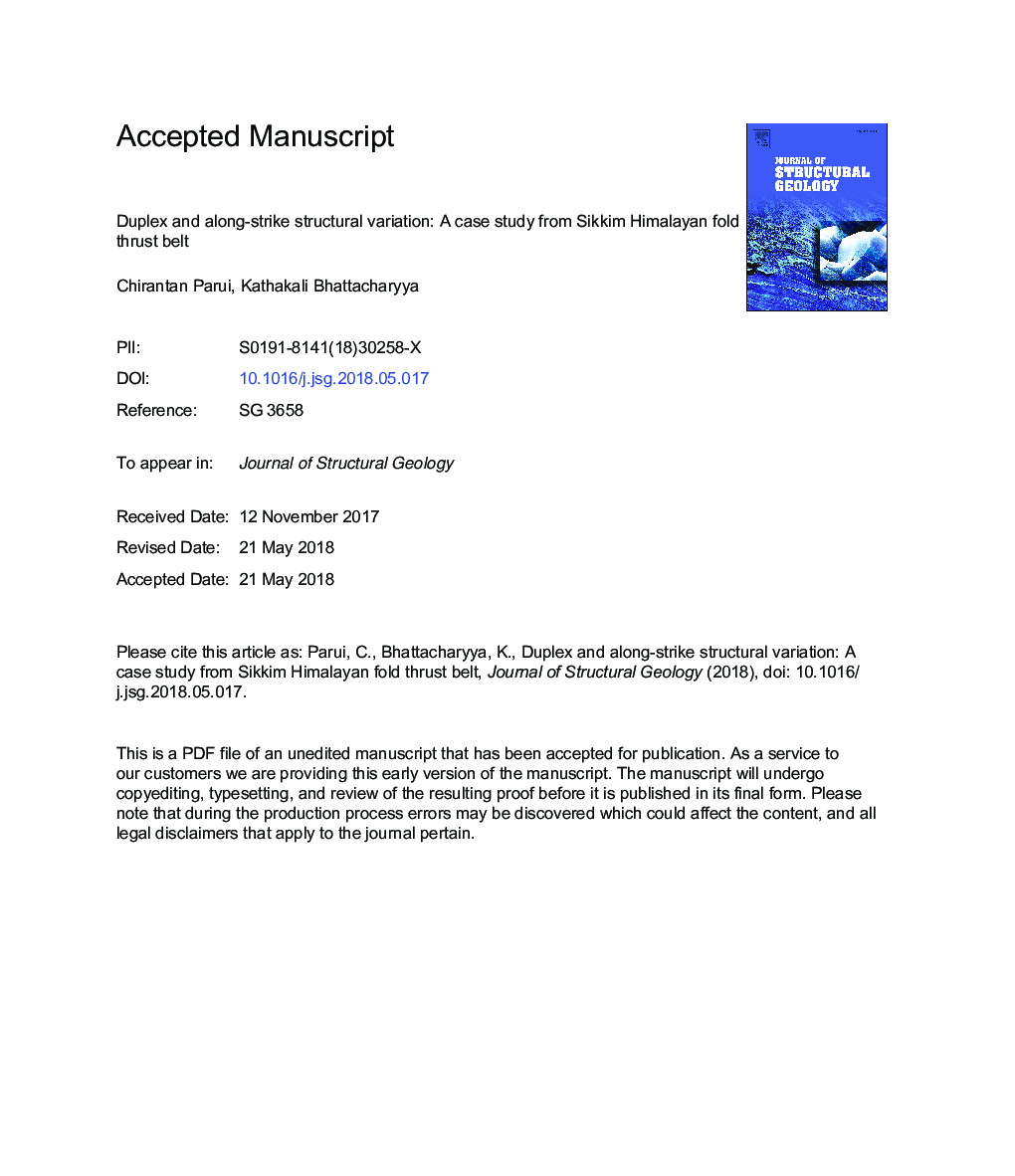| Article ID | Journal | Published Year | Pages | File Type |
|---|---|---|---|---|
| 8914373 | Journal of Structural Geology | 2018 | 55 Pages |
Abstract
The Sikkim Lesser Himalayan fold thrust belt records along-strike structural variations over â¼15â¯km. The lower Lesser Himalayan (Rangit) duplex (LHD) is blind, and the overlying Pelling and Ramgarh thrust sheets are more intensely folded and preserved in eastern Sikkim than in western Sikkim. A retrodeformable, regional balanced cross-section reveals a minimum shortening of â¼403â¯km (â¼80%) with an average long-term shortening rate of â¼18â¯mm/yr in the eastern transect. Comparison with published data indicates that eastern Sikkim records â¼47â¯km lesser shortening. In western Sikkim, an â¼2â¯km high footwall Main Himalayan thrust (MHT) ramp below the Rangit duplex caused higher structural culmination exposing the duplex. In contrast, an â¼0.35â¯km high ramp below the Rangit duplex in eastern Sikkim did not create sufficient culmination to expose the duplex, causing along-strike discontinuous duplex exposure. The LHD with a blind component, and having fewer (11) but gentler dipping (â¼40°) horses transferred more displacement to the roof thrust in eastern Sikkim than the twelve, steeper dipping (â¼60°) horses in western Sikkim. Lateral variations in location and height of footwall MHT ramp, initial width of the Lesser Himalayan basin, and presence of a lateral ramp explain the structural variation in Sikkim.
Related Topics
Physical Sciences and Engineering
Earth and Planetary Sciences
Geology
Authors
Chirantan Parui, Kathakali Bhattacharyya,
